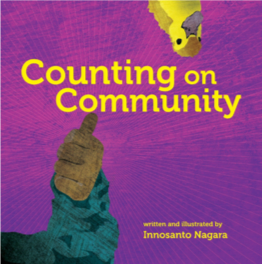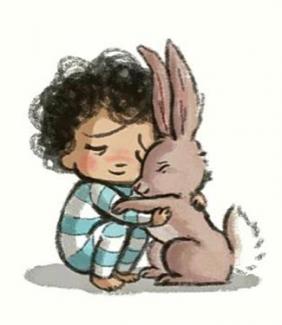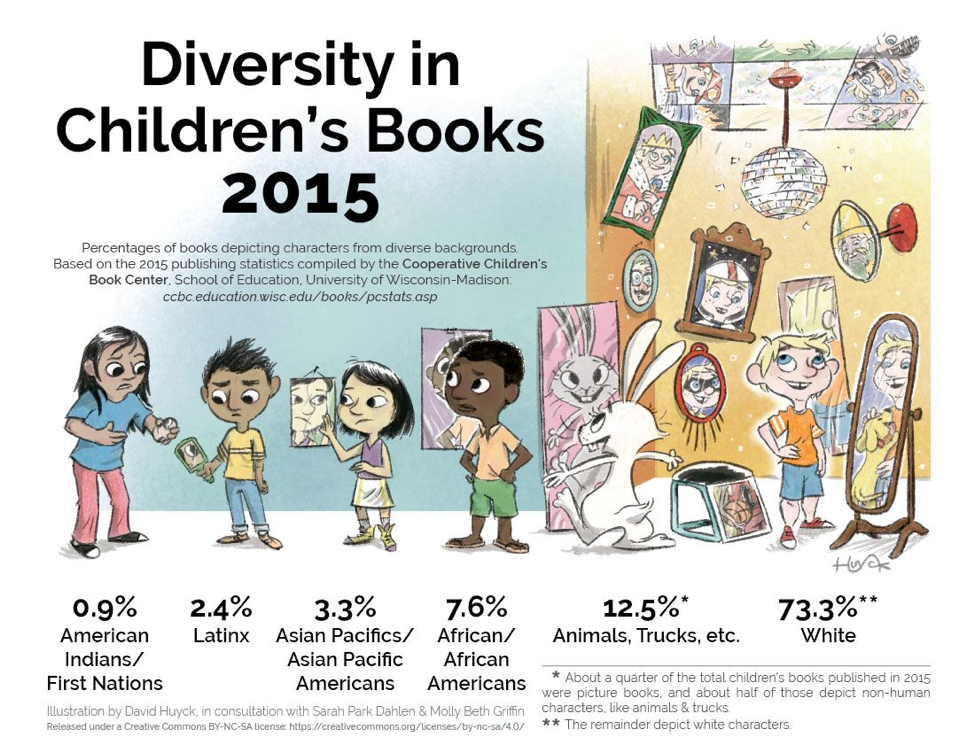By Casey Keene, National Resource Center on Domestic Violence
Our favorite childhood stories tend to stick with us. For me, rabbits seemed to be prominent characters in the books I loved – from Uncle Wiggily to Watership Down, Peter Rabbit and Alice in Wonderland. And more than the adventures of the bunnies, I remember the way the stories made me feel, and the lessons I still carry with me. There were lessons of survival, persistence, curiosity, risk-taking, and problem-solving that reinforced values of leadership, compassion, community, respect, and kindness. These rabbits live on in my subconscious, holding power and space having shaped my understanding of the world and all of its love and pain. Now, as a parent, I’ve come to know just how critical these choices are for my own children, and just how much power a simple picture book can hold.
Enhancing Social Justice Literacy
In 2015, Tanya Nixon-Silberg and Francie Latour, two Black mothers, authors, and community activists, drew on their own parenting practices – especially their use of children’s books to disrupt dominant narratives with their kids – to launch Wee the People (WTP) in Boston. WTP is a social justice project for children aged 4-12 that explores activism, resistance, and social action through the visual and performing arts. As part of their work, WTP hosts Social Justice Storytime at the Boston Public Library for their “Little Voices, Big Changes” initiative, built on the belief that if kids can understand fairness they can understand justice. Tanya and Francie work to builds parents’ capacity to confront topics like racism, deportation, gentrification, misogyny, islamophobia, and homophobia.
 Innosanto Nagara, a Southeast Asian immigrant father, author/illustrator, and graphic designer creates new-wave board books that inspire conversations about social justice and encourage children’s passion and action around social causes like environmental issues, LGBTQ rights, and civil rights. With titles like A is for Activist, Counting on Community, and The Wedding Portrait, Innosanto explores themes of activism, free speech, political progress, civil disobedience, and artistic defiance. Innosanto is on the editorial team of M is for Movement, a site dedicated to exploring social justice and activism in children’s literature. The contributors to M is for Movement are children’s writers, illustrators, and book creators who are long-time activists and advocates who “come from and stand with marginalized communities living at intersections of identity, experience, race, class, gender, religion, sexuality, and ability.”
Innosanto Nagara, a Southeast Asian immigrant father, author/illustrator, and graphic designer creates new-wave board books that inspire conversations about social justice and encourage children’s passion and action around social causes like environmental issues, LGBTQ rights, and civil rights. With titles like A is for Activist, Counting on Community, and The Wedding Portrait, Innosanto explores themes of activism, free speech, political progress, civil disobedience, and artistic defiance. Innosanto is on the editorial team of M is for Movement, a site dedicated to exploring social justice and activism in children’s literature. The contributors to M is for Movement are children’s writers, illustrators, and book creators who are long-time activists and advocates who “come from and stand with marginalized communities living at intersections of identity, experience, race, class, gender, religion, sexuality, and ability.”
At the 2018 Facing Race National Conference in Detroit organized by Race Forward, Wee the People co-founder Tanya Nixon-Silberg and author/illustrator Innosanto Nagara presented a workshop together on racial literacy for children. They stressed the importance of racial literacy from an early age in the process of dismantling racist systems and structures.
Through their work, Tanya, Francie, and Innosanto are invested in inspiring social action through the arts, and have found that children’s books offer a powerful medium for moving new generations of people towards justice. Louise Derman-Sparks from Social Justice Books (a project of Teaching for Change) agrees:
“Children’s books continue to be an invaluable source of information and values. They reflect the attitudes in our society about diversity, power relationships among different groups of people, and various social identities (e.g., racial, ethnic, gender, economic class, sexual orientation, and disability). The visual and verbal messages young children absorb from books (and other media) heavily influence their ideas about themselves and others. Depending on the quality of the book, they can reinforce (or undermine) children’s affirmative self-concept, teach accurate (or misleading) information about people of various identities, and foster positive (or negative) attitudes about diversity. Children’s books teach children about who is important, who matters, who is even visible” (Guide for Selecting Anti-Bias Children’s Books, 2013).
Social Justice Literacy as a Prevention Strategy
Social justice literacy is an effective gender-based violence prevention strategy – a proactive effort to stop violence and abuse from happening in the first place by interrupting the cultural rules, norms, and constructs that support it. Several projects highlighted in the PreventIPV Tools Inventory demonstrate the effectiveness of social justice literacy in creating a more peaceful and just world. For example, Teaching for Change is a project that strives to build a more equitable, multicultural society by promoting social justice activism in the classroom. Their strategies center on leadership development and civic engagement for students, parents, and teachers that draw on real world current events. Teaching a People’s History offers classroom materials that emphasize the role of working people, women, people of color, and organized social movements in shaping history. And Rethinking Schools focuses on strengthening public education through social justice teaching and education activism with a specific focus on promoting equity and racial justice in the classroom. These approaches focus on impacting the outermost layers of the social ecology to shift our cultural norms and values.
Priya Vulchi and Winona Guo, youth activists and creators of The Classroom Index, a textbook on racial literacy, identified two gaps in racial education:
- The heart gap: “An inability to understand each of our experiences, to fiercely and unapologetically be compassionate beyond lip service,” and
- The mind gap: “An inability to understand the larger, systemic ways in which racism operates.”
TED Talk: What It Takes to be Racially Literate by Priya Vulchi and Winona Guo
Children’s literature is one way to bridge these gaps by inspiring, educating, and engaging readers of all ages in a deeper understanding of the lived experiences of all people, families, and communities in our wide and vibrant world. But the fact is that marginalized people and communities are outrageously underrepresented in books available to children in mainstream American classrooms, libraries, and catalogues – in terms of both those authoring the books, and characters represented inside them. The Cooperative Children’s Book Center found that in all children’s picture books published in 2015, you are more likely to find non-human characters like bunnies (12.5%) than African Americans (7.6%) and Latinx (2.6%) combined. White characters are primarily depicted in the vast majority (73.3%) of these books.
Social Justice Books serves to identify, vet, and promote multicultural and social justice children’s books, building on the tradition of the Council on Interracial Books for Children which offered a social justice lens to reviews of children’s literature. They also help parents and children develop critical literacy skills and promote activism around diverse representation in libraries. One example is their #StepUpScholastic campaign urging Scholastic to “publish and distribute children’s books that reflect and affirm the identity, history, and lives of ALL children in our schools.” Engaging children in proactive efforts to both notice and address the underrepresentation of people of color in literature, as illustrated above, builds their social justice literacy.
Books that Promote Justice and Peace
For those looking for books that promote justice and peace, resources like Social Justice Books offer vetted booklists on a variety of topics, as do Raising Luminaries: Books for Littles and Little Feminist: Books for raising conscious kids. Topics include:
- Learning about family structures
- Talking to kids about violence
- Books for tomorrow’s leaders
- Honoring single mothers
- Promoting healthy fatherhood
- Fostering social and emotional health, compassion, and independence
- Helping kids recognize privilege
- Cultivating healthy sexual boundaries
- Preventing sexual violence
- Bullying, civil disobedience, and disrupting injustice
Seek out books by authors of color like Newbery Medal and Coretta Scott King Honor receipient Kwame Alexander. Additionally, several anti-violence organizations offer book lists specific to addressing trauma. For example, The Child Witness to Violence Project offers books about trauma and violence for young children.
As M is for Movement explains, “Children’s literature—both fiction and nonfiction—is full of inspiration and examples of children and adults who stand up for themselves and others. Whether it’s ducks organizing animals to oppose unfair farm rules, a student listening to her classmates’ concerns when running for student council, or a boy joining his first march, young people’s literature can demonstrate how individuals and communities have the power to act as agents for social change.”
Through children’s books, we can teach justice and peace across generations. By engaging a child in a book with a strong message that fills the heart and the head, we can help build their understanding, compassion, and confidence to impact social change in ways that are meaningful and important to them. And these lessons and values will likely stick with them their whole life long
Images:
The Rabbit Listened by Cori Doerrfeld
Counting on Community by Innosanto Nagara
Illustration: Diversity in Children's Books 2015 by David Huyck, in consultation with Sarah Park Dahlen and Molly Beth Griffin















